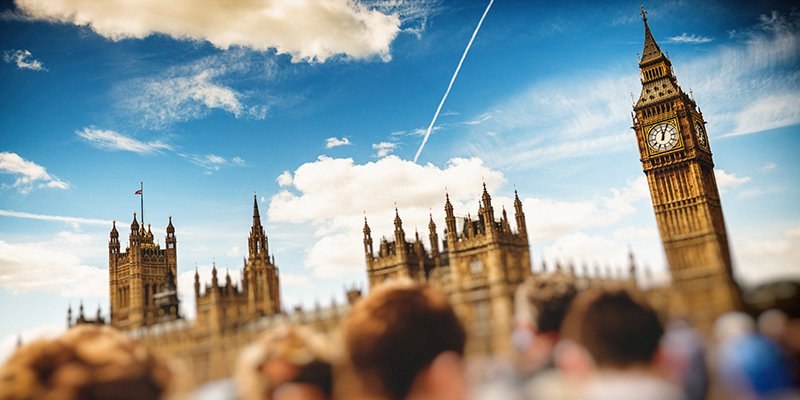Almost two years since the last general election, and with the next election not scheduled until 2024, the Conservative lead remains stubbornly strong (notwithstanding a blip around the announcement of the social care levy). With Parliament set to re-open next week following conference recess, YouGov has compiled all of our voting intention surveys in September – totalling some 24,000 respondents – to take a detailed demographic look at where the electorate stands.
2019 general election vote
Both major parties are holding onto the large majority of their 2019 voters – the Conservatives are retaining 83% of those who voted for them last time, while for Labour it is 77%. Very few voters are switching between the two parties, with just 3% of 2019 Labour voters saying they now favour the Conservatives, and 5% going the opposite way. The biggest drain on the 2019 Labour vote is from the Greens, who are currently attracting one in nine (11%) of this group.
The Liberal Democrats are only currently holding on to half of their 2019 voters (51%). Labour are the main benefactory, picking up a quarter of these voters (27%) while the Greens (10%) and Conservatives (9%) also benefit. As well as picking up votes from elsewhere, the Greens are holding on to 72% of their 2019 vote – impressive given smaller parties tend to experience more churn during election cycles.
The figures discussed above exclude those who are unsure how they’d vote in an election or say they will not vote. This is referred to as headline voting intention. However, outside of an election campaign a large number of the public say “don’t know” – at the moment this figure is at 19% for all adults. This figure differs by party, with one in five (19%) 2019 Conservative voters currently saying they don’t know how they’d vote, compared to 15% of 2019 Labour voters. It is far easier to win back those who are currently saying they’re unsure how they’ll vote than those who say they now support a different party. In 2017, after Theresa May announced a snap election, many undecided voters who’d backed Labour in 2015 eventually returned to the party, helping boost their headline voting intention in the polls. To get the full picture it is therefore useful to keep an eye on differential “don’t knows” amongst parties as well as the headline figures.
EU referendum vote
Between the 2017 and 2019 general elections, we saw Labour losing a lot of Leave voters and the Conservatives losing Remain voters. For example, the Tories kept hold of 92% of their 2017 voters who also voted Leave at the 2019 election, but only 65% of their 2017 voters who backed Remain.
This Brexit realignment now seems to have run its course, with both parties keeping the same proportion of 2019 voters regardless of whether they voted Leave or Remain. Where their lost voters have gone does vary by referendum vote though.
Labour have lost 9% of their 2019+Leave voters to the Conservatives compared to just 2% of their 2019+Remain voters. Twice as many of their Remain voters are going to the Greens (13%) as their Leave voters (7%). One in twelve Conservative 2019+Leave voters (8%) have moved to Reform UK, compared to 2% of their 2019+Remain voters.
Age and work status
Age remains a dividing line in British politics – the older someone gets, the likelihood they will be a Conservative voter increases and the chance they’ll be a Labour voter decreases. Just 15% of 18-24 year olds intend to vote Conservative at the next election, compared to 61% of those aged 70+. Labour pick up half (49%) of the 18-24 vote share, while only one in six of those aged 70 and above intend to vote for them (17%).
The Green Party are also far more likely to attract younger voters, picking up 14% of the under 25 vote compared to 4% of those aged 70 and above. The Liberal Democrats’ vote remains fairly constant across age groups.
Heavily linked to age, the differences between the working and retired population are also stark. Those in work split 37% voting Labour to 33% voting Conservative. In contrast, retired adults are more than twice as likely to vote Conservative as Labour (56% vs 21%). There is very little difference in how full time and part time workers are voting.
Social grade and education level
The Conservatives remain ahead across social grades, but the gap is a lot closer among those who are more middle class. AB and C1 voters both marginally break to the Conservatives over Labour by 36% to 34%. C2 voters split 43% to 30% to Conservatives while for DE voters it is 39% to 33%.
The differences in voting depending on someone’s education are far larger than those for different social grades. Twice as many of those whose highest attained qualification is GCSE (or equivalent) are voting Conservative than Labour (51% to 26%), while amongst those who hold a degree this is almost reversed (41% are voting Labour, 25% Conservative). The Liberal Democrat vote share also differs a lot depending on education level with 12% of those in the high education level category voting for the party compared to 5% in the low group.
Education is heavily correlated with age as younger people far more likely to have attended university. However, when we look at education level split by older and younger people there are still notable differences. Amongst under 40s with a low education level, Labour have a 10-point lead over the Conservatives (39% to 29%) while for those with a degree the gap is 21-points (Labour 42%, Conservatives 26%). Amongst those aged 40 and above, the Conservatives are on 52% with the low education level group, 30 points ahead of Labour on 22%. While still ahead amongst the higher education level group, their lead is narrower (12 points) with the Conservatives on 41% and Labour on 29%.









